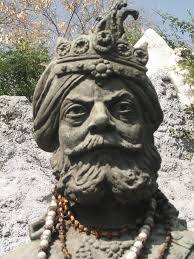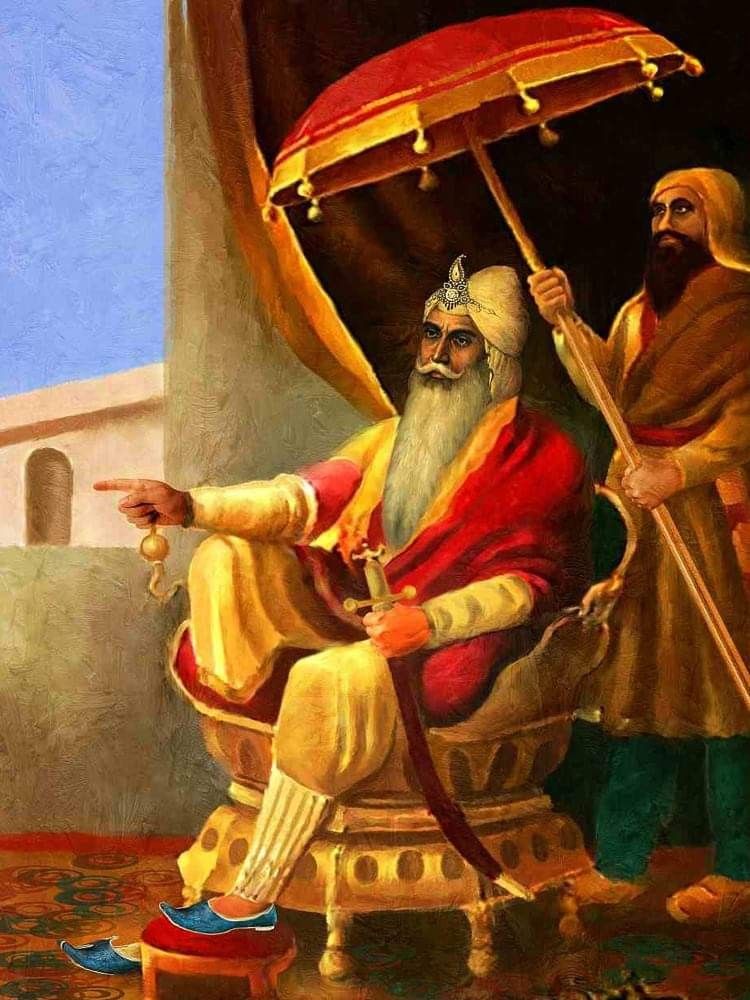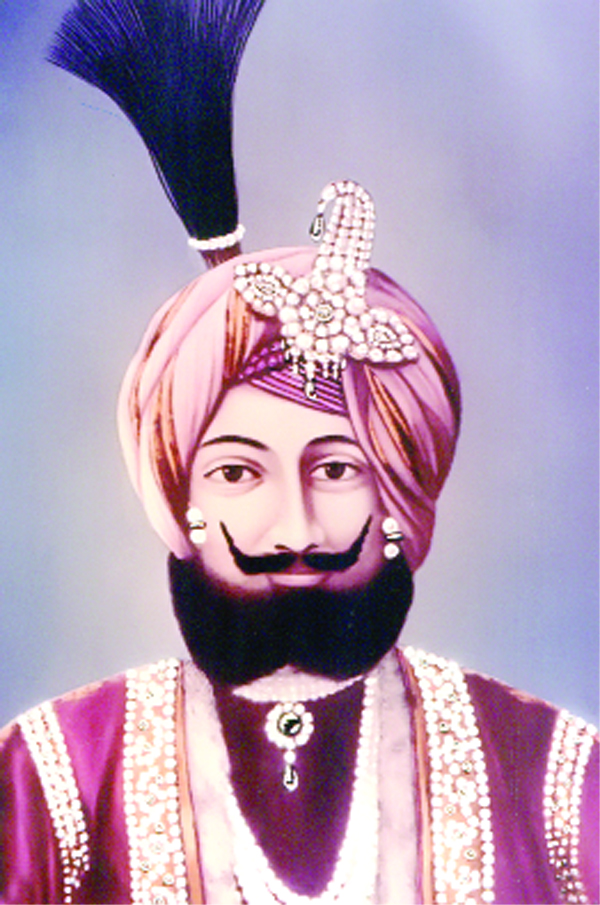(History of Jammu)
Historical Timeline of Jammu according to a popular myth start’s with the name of Jammu which is derived from Raja Jambu Lochan in the 14th century B.C. The first king of Jammu is believed to be Agnibaran, a descendent of “Kush” the elder son of Lord Ram. He with his brother Agnigarbh migrated from Oopa (their state in Ayodhya) to Kangra (Nagarkot) in H.P. They crossed Ravi River from Kangra and settled at Parole in Kathua district. Vayu Srava (son of Agnibaran) conquered all the lands of present Jammu region.
Agnigarabh succeeded the throne of Jammu after Agnibaran’s death. He had 2 sons Bahu Lochan and Jambu Lochan. Elder son of Agnigarabh Bahu Lochan succeeded his throne and found the town of Bahu and constructed Bahu Fort. He was killed as he tried to conquer territories of Punjab from Chandrahas.
Maharaja Jambu Lochan

Jambu Lochan became the king after Bahu Lochan and killed Chandrahas. In 1400 BC Jambu lochan once was on a hunt and saw a tiger and goat drinking water from the same river/pond. He decided to made the place as a capital and named the place Jammu.
His son Puran Karan succeeded the throne. Bahu Lochan Dynasty ruled over Jammu up to 1100 B.C. The last king of Jambu lochan Dynasty was Shiv Prakash. He was killed by Raja Shal of Sialkot. Raja Shal was maternal uncle of Pandvas. He was killed in Mahabharat. After his death, Babru-Vahan (Arjun’s Son) governed Jammu. Their descendants ruled Jammu for over 500 years i.e. up to 600 B.C. After 600 B.C, Jyoti Prakash and Sarv Prakash conquered J&K and ruled till 500 B.C.
Raja Bodh Arjun became the king after 500 B.C. He was a conqueror and benevolent ruler of Jammu. His successor ruled till 326 B.C. In 326 B.C Raja Ajay Singh ruled Jammu. He was the Son in Law of King Porus. He was killed fighting for Porus against Alexander. His son Bijoy Singh ascended the throne after Ajay Singh. Ram Gupta descendent of Bijoy Gupta constructed Ram Garh Fort in Reasi district of Jammu.
In 50 B.C Rai Dynasty of Sialkot annexed Jammu to their Kingdom. They ruled up to 430 A.D. Suraj Dhar became the ruler of Jammu after Rai Dynasty. He reigned 430-485 A.D. This dynasty ruled for 400 years i.e. up to 830 A.D. A merchant named Nara Vahana founded Lohara State (A village in Jammu district). His kingdom spread well beyond Poonch district. He had a conflict with Kashmir rulers due to which Shanker Varman of Kashmir killed Nara Vahana in 890 A.D.
Maharaja Ranjit Singh

After 1125 A.D, Dev Dynasty began in Jammu. The first king of Dev Dynasty was Surya Dev. It ruled till 1816 A.D. Maharaja Ranjit Singh’s army under Gulab Singh as a Commander-In-Chief conquered Jammu and Kashmir. After this Sikh rule was established in Jammu & Kashmir and was ruled by Diwan Moti Ram and 9 other Diwans.
Maharaja Ranjit Singh gave the territory to Gulab singh in 1820 A.D. He (Gulab Singh) was after that honored by the title of Raja of Jammu by Maharaja Ranjit Singh. Gen. Zorawar Singh was appointed as Wazir. He attacked Ladakh in1834 A.D and defeated its ruler Tsepal Namgyal. Ladakh was then annexed in 1836 A.D. In few years in 1839 A.D Maharaja Ranjit Singh died.
Sikh empire eventually weakened after the death of Maharaja Ranjit Singh. EIC (East India Company) took over Lahore Dynasty during Anglo-Sikh war (1845-1846 A.D). Hence, J&K became the part of Lahore Dynasty under British rule. Treaty of Amritsar 1846 happened. Under this treaty British government sold J&K to Gulab Singh. He paid 75 lakhs to Britishers as a war indemnity and became the Maharaja of J&K.
Maharaja Gulab Singh

The rule of Dogra Dynasty started from (1846-1947 A.D) and Maharaja Gulab Singh became the first ruler of J&K of Dogra Dynasty from (1846-1857 A.D). After him Maharaja Ranbir Singh ascended the throne from (1857-1885 A.D) then after son of Maharaja Ranbir singh (Maharaja Pratap Singh (1885-1925 A.D)) and then the nephew of Maharaja Pratap Singh ascended the throne Maharaja Hari Singh (1925-1947 A.D).
Summary
Jammu’s history is rich and complex, starting with its mythological founding by Raja Jambu Lochan in the 14th century B.C., who named the city after witnessing a tiger and goat drinking peacefully together. The region saw successive rule by various dynasties, including descendants of Lord Ram, the Pandavas, and the Rai and Lohara dynasties. Significant developments occurred under the Dogra Dynasty from 1846 to 1947, beginning with Maharaja Gulab Singh’s purchase of Jammu and Kashmir from the British. The Dogra rule saw modernization and consolidation of the region, culminating in its integration into India post-independence.
You can also refer to previous article: Modern History of Jammu and Kashmir.
